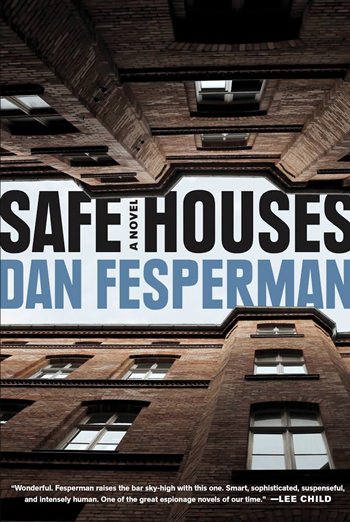
In “Safe Houses,” author Dan Fesperman superbly melds a character-strong espionage thriller with a suspenseful mystery that also aligns with the #MeToo movement.
 As a spy thriller, “Safe Houses” eschews high-tech gadgets to concentrate on the emotional and physical peril of undercover work. As a mystery, it quickly becomes a family drama.
As a spy thriller, “Safe Houses” eschews high-tech gadgets to concentrate on the emotional and physical peril of undercover work. As a mystery, it quickly becomes a family drama.
The novel moves seamlessly between West Berlin in 1979 and a small town in Maryland’s Eastern Shore during 2014 as it explores the life and death of Helen Abell Shoat. In 1979, Helen Abell is a bright but inexperienced 23-year-old working for the CIA. Like many other women at the CIA during this period, Helen is relegated to a low-level position where she deals with sexism and disrespect. She’s taken a menial assignment — maintaining the upkeep of the four “safe houses” scattered around Berlin — and made it a vital job. At one of the houses, Helen makes a life-long enemy of a higher-ranking officer, Kevin Gilley, when she interrupts him assaulting a young German woman, whose body is found a week later. Helen launches a clandestine investigation and soon learns that Kevin has a history of abusing young female agents, secure in the knowledge that male management will protect him.
In 2014, Helen Shoat has been living a quiet life on a farm with her husband, Tarrant, when the couple is shot to death in their sleep. The likely suspect is their mentally challenged son, Willard. But the couple’s daughter, Anna, who knows nothing about her mother’s past, doesn’t believe her brother could commit such a murder.
As the details of the two eras are revealed, “Safe Houses” soon has multiple meanings. The safe houses where agents feel free to meet in private are anything but safe — with hidden tape recorders going — and they definitely aren’t safe for female agents. Helen’s home was her refuge, but it was also where she was murdered.
Fesperman supplies plenty of tense scenes, especially during Helen’s younger years, but his affinity for character studies is the novel’s driving force. Kevin’s violence toward women is coupled with the dangerous power he wields as he moves up in the CIA. While Kevin is a villain, Fesperman never allows his characterization to go over the top. (AP)





